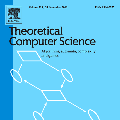Palindromes are popular and important objects in textual data processing, bioinformatics, and combinatorics on words. Let $S = XaY$ be a string where $X$ and $Y$ are of the same length, and $a$ is either a single character or the empty string. Then, there exist two alternative definitions for palindromes: $S$ is said to be a palindrome if $S$ is equal to its reversal $S^R$ (Reversal-based definition); or if its right-arm $Y$ is equal to the reversal of its left-arm $X^R$ (Symmetry-based definition). It is clear that if the ``equality'' ($\approx$) used in both definitions is exact character matching ($=$), then the two definitions are the same. However, if we apply other string-equality criteria $\approx$, including the complementary-matching model for biological sequences, the Cartesian-tree model [Park et al., TCS 2020], the parameterized model [Baker, JCSS 1996], the order-preserving model [Kim et al., TCS 2014], and the palindromic-structure model [I et al., TCS 2013], then are the reversal-based palindromes and the symmetry-based palindromes the same? To the best of our knowledge, no previous work has considered or answered this natural question. In this paper, we first provide answers to this question, and then present efficient algorithms for computing all maximal palindromes under the non-standard matching models in a given string. After confirming that Gusfield's offline suffix-tree-based algorithm for computing maximal symmetry-based palindromes can be readily extended to the aforementioned matching models, we show how to extend Manacher's online algorithm for computing maximal reversal-based palindromes in linear time for all the aforementioned matching models.
翻译:暂无翻译




